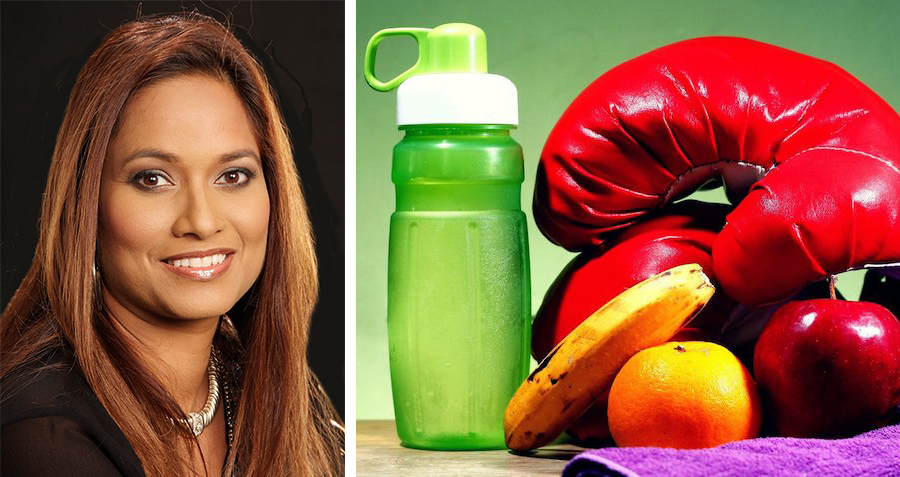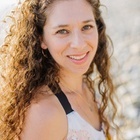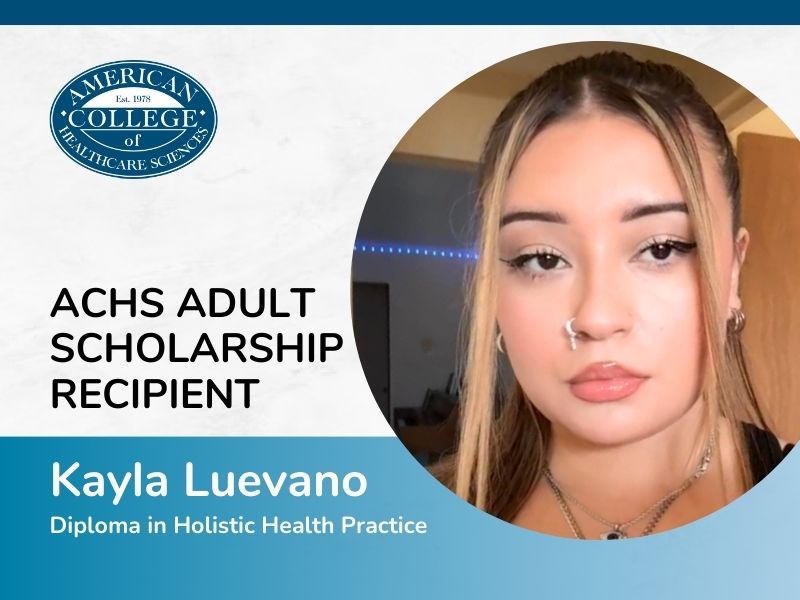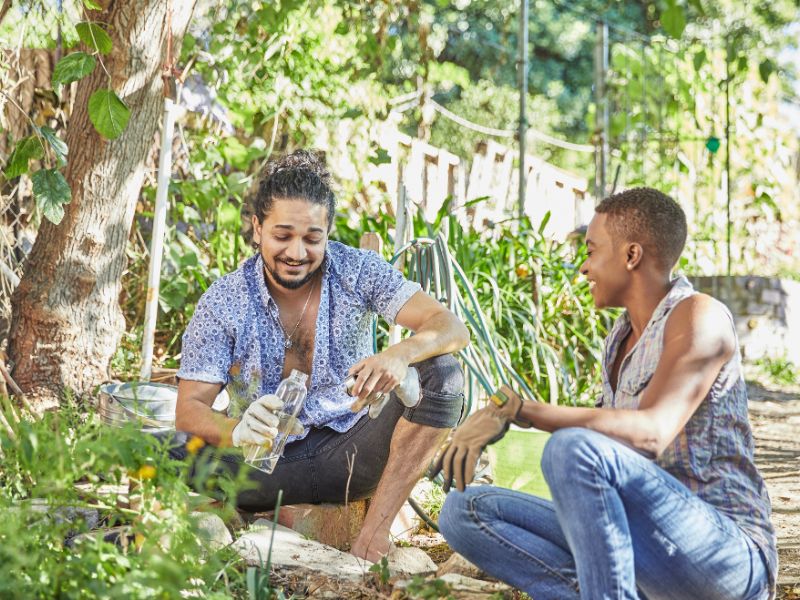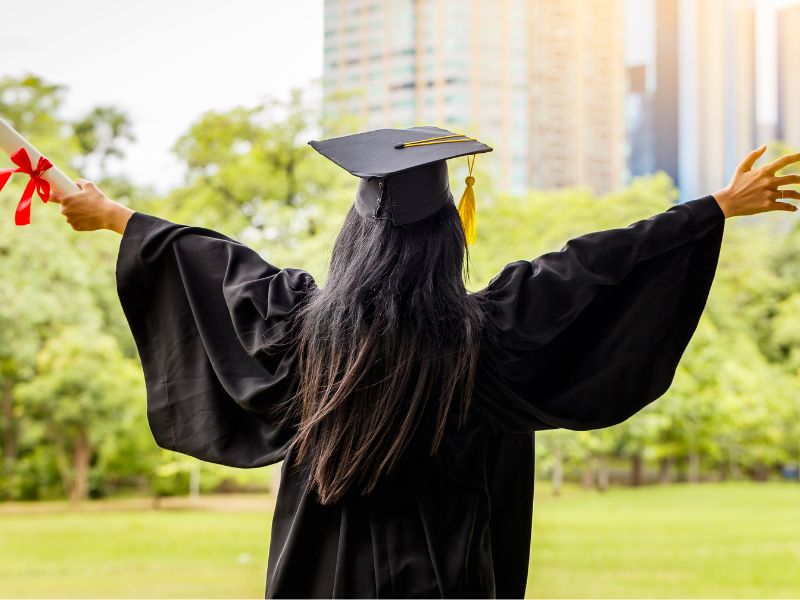In 2016, Shivana Inalsingh was appointed Director of the Female Championship Committee for the World Boxing Association. It’s no surprise since Inalsingh has been a relentless advocate for holistic health sports nutrition and safety for years. She’s worked with notable sports organizations such as the World Boxing Association (WBA) and was recognized for her work with 9/11-associated trauma victims and first responders in New York City. Inalsingh has a Master of Science in Holistic Nutrition from the American College of Healthcare Sciences (ACHS) and currently works with clients the world over.
I recently caught up with Shivana for an alumni update, and when asked for the 411 about her success, our Q&A session went like this:
ACHS: You’re a trailblazer for holistic health—you were named the 2014 DEAC Famous Alumni award winner and a 2015 NANP Community Award winner. What’s changed for you since then?
Shivana Inalsing: I am grateful for the fulfillment I feel in my life and it continues to get more interesting. I am based in Trinidad and Tobago, but my work takes me across the world.
In December 2015, following my 10th presentation at the World Boxing Association (WBA) Medical Seminar, I was offered a position on the Directorate of the WBA. A month after being invited to the Directorate, I was given the post of Director of the WBA Female Championship Committee, making me one of two women in the organization who serve at this level.
I have also been facilitating more workshops on Ringside Medicine in the areas of nutrition, safety, and health and conducting more one-on-one sessions with athletes to support them in improving performance and recovery. During the past “Olympic” year, I was also part of the Advanced Sport Management Program with the International Olympic Committee (IOC) through the Trinidad and Tobago Olympic Committee.
ACHS: What is the focus of your work currently?
SI: Since completing my Masters in Holistic Nutrition, I have begun to place a stronger focus on nutrition and nutritional interventions as a way to provide clients with the tools to support their health and vitality.
A new area for me, which I link to my own personal development and spiritual practice, is the ability to tap into the frequency of healing codes to facilitate the healing process of my clients. When we look at healing, we see that strong morphic fields are created and reinforced by belief systems, and these become part of our “programming.” My gift is to break down these non-beneficial morphic field connections and establish new pathways. I now coach clients to transform their state of being by changing the way they perceive and interact with the world. The mind has a powerful role in the direction of our health and healing as well as how we co-create. Our reality is always a vibrational match of who we are.
ACHS: We heard you were appointed the Director of the Female Championship Committee for the World Boxing Association and are still actively involved with the Association of Ringside Physicians. Tell us about your work.
SI: For the past 10 years, I have been presenting at the Medical Seminar of the World Boxing Association on various aspects of the health, safety, and performance of boxers and ringside officials.
I began by presenting case studies on the application of reflexology and craniosacral therapy to support recovery of the brain from trauma and injury. I thought this could be an effective complementary health system in sport, particularly in regions and to boxers where medical support was not available.
At the time, I also started recognizing the value of nutrition in mitigating the risk of injury and concussion. In this kind of weight-management sport, this information is valuable for improving an athlete’s performance and health. It was the desire to see boxers reduce their health risk in the ring and to improve their performance, as well as the value I saw in empowering my clients across the board, that really moved me to pursue my masters degree and share it with the community.
Soon, through word of mouth, my work in the field expanded and so did my client list, including professional athletes and people with general health issues. I use foot reflexology as the foundation of my practice to tune into what is happening in the body, and then identify the practices, lifestyle, and nutrition protocols that can support health. So far, I have worked with stroke and heart patients, diabetics and kidney patients, adults, children and babies at varying stages of health and stress, as well as professional athletes including several World Boxing Champions, international soccer stars, footballers, swimmers, and cyclists.
Gender equality is an area that needs to be further developed among professional female athletes, just as we see in many of the other non-sport professions. Female boxers have earned my respect and admiration as they have shown me that as professional athletes, they must constantly renew their commitment to high performance in all areas of their life, which means being disciplined, focused, and committed. Inside the ring, they are professional athletes; outside the ring, these women are wives, mothers, daughters, community leaders, and advocates for promoting fitness and health. They remain accountable in the very traditional sense of being the pillar of the family structure.
Many of us in the Western world don’t see or experience the level of violence against women seen in many other countries. Training as a professional athlete really changes how you interact with the world and by extension, how the world experiences your presence.
ACHS: Have you seen any developing trends in sports fitness and/or health and wellness and/or holistic nutrition industries you think people need to know about?
SI: I think it is very exciting to be living now and to be part of the wellness and health industry. Not only is it expanding significantly as we recognize the health continuum, but because of the challenges it presents.
On one extreme, we have those seeking support, solution, or cure from illness and disease. They have followed the allopathic medical model and are seeking additional support outside of these boundaries. They are the ones who have spent their lives leaving their health in the hands of others and are ready to take control again.
In the middle of the continuum are the ones interested in managing “dis-ease.” They see their health as an expression of the combination of both innate and adventitious influencers. They are looking for people and information who can support them in their quest for health, whether it is stress management, weight loss, fitness, or avoiding and preventing major disease.
As the largest and most varied group in the health continuum, they are actively seeking solutions from the abundant number of resources available, and are actively engaged in various practices that can easily range from conventional allopathic to vibrational and energy medicine.
The challenge these groups face is that as active seekers of information, they want guidance on the abundance of information that is so readily available on the Internet. It can be very overwhelming. By the time they find their way to the right support, the disease can be very far advanced.
As healthcare professionals, this opens us to not only the opportunity to share timely information but also exposes us to the challenge of a rapidly changing industry that is shifting from a body focus to a mind-body focus and the variables attached to it. We see many healthy looking people who suffer from the unexpected heart attack or illness, because lifestyle, environmental health, emotional health, and well-being have been neglected.
From what I see, the “one-size-fits-all” approach is no longer as effective, and we have to create and cultivate personalized healthcare systems based on individual needs and offering the tools to allow people to help and motivate themselves. This opens up great opportunities based on science, technology, and spirituality.

ACHS: Do you have any advice for current health and wellness and/or holistic nutrition students?
SI: To best serve others, you must cultivate self-awareness and practice self-care. This means not only placing value on your service, but also to invest what is necessary for your self-care and to cultivate your practice with awareness and mindfulness. Too many times I see practitioners who compromise their health and well-being by not cultivating the right practices of self-care. We have to learn to shift this.
Also, do what is necessary to stay abreast of what is happening in the industry. Reading published research articles can often give you a hint of future trends in the industry.
The last is to cultivate a practice of discernment. Not everything we read is true, and we have to be able to dig deeper. There is a hidden tapestry at work, and it is important to understand that there are often social and economic implications of the promotion of certain ideas. You have to learn to read through these and make informed decisions in the best interest of your clients.
ACHS: What are your plans for the future? Any upcoming presentations, events, articles, etc. we should look out for?
SI: Apart from the current seminars, I have a lot of exciting stuff coming up in 2017, beginning with healing retreats in Trinidad and Tobago. Some of the retreats are focused on supporting perimenopausal women in shifting the dogma about menopause so that they can experience something different from past generations. Other workshops are on self-care, like how to incorporate consciousness tools for hands-on work, and practitioner reflexology training.
In my private practice, I’ve just begun a new aspect of my transformational coaching session, where I have been using holographic tools to clear generational “programming,” allowing my clients to align with their Divine purpose and plan. Using these holographic protocols not only allows clients the opportunity to experience transformation from the convenience of their home, but based on the feedback from several clients, they have also experienced the benefit of changes in their family dynamics as relationships begin to heal and improve. I am also enjoying the benefits of using my creative passion for painting to create pieces that clients can use in their home or business to raise the vibration of their space as well as to empower their vision.
On the side of Professional Sport, I am just back from sitting with the WBA Medical Committee where I helped re-write the medical protocol for our athletes, and there are some upcoming announcements soon to take place. Within the past few weeks also, I have also been approached by the Association of Ringside Physicians to consider accepting a role on their Board so I can support them in building a global membership of certified physicians who care for their athletes of Contact Sport, applying a gold standard in Ringside Medicine. These are exciting developments for me as I not only get to bear witness to some important changes that I hold close to my heart, but I am also making an important contribution to the future health, safety, and performance of athletes.
This article is for informational purposes only. It is not intended to treat, diagnose, cure, or prevent disease. This article has not been reviewed by the FDA. Always consult with your primary care physician or naturopathic doctor before making any significant changes to your health and wellness routine.
Disclosure of Material Connection: I am the Dean of English, Communications Manager, and Press Coordinator for American College of Healthcare Sciences (ACHS), the Institution that publishes this blog. However, all opinions are my own. All opinions of the interviewee, ACHS graduate Sarah Hurt, are her own. This blog may contain affiliate links. I am disclosing this in accordance with the Federal Trade Commission’s 16 CFR, Part 255: “Guides Concerning the Use of Endorsements and Testimonials in Advertising.”
